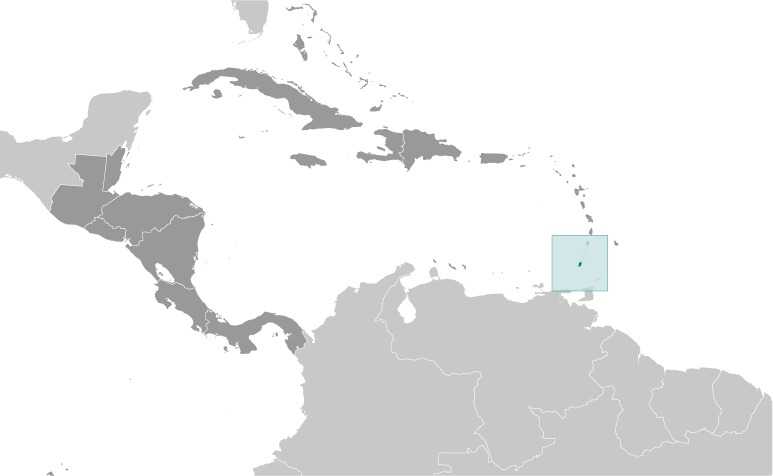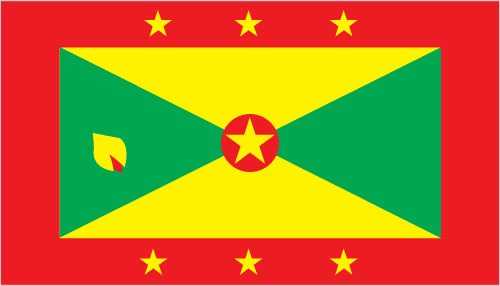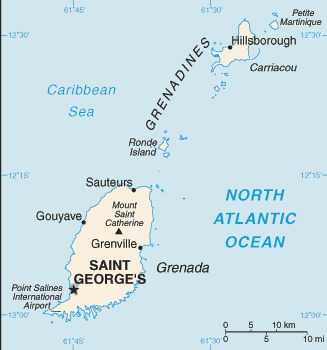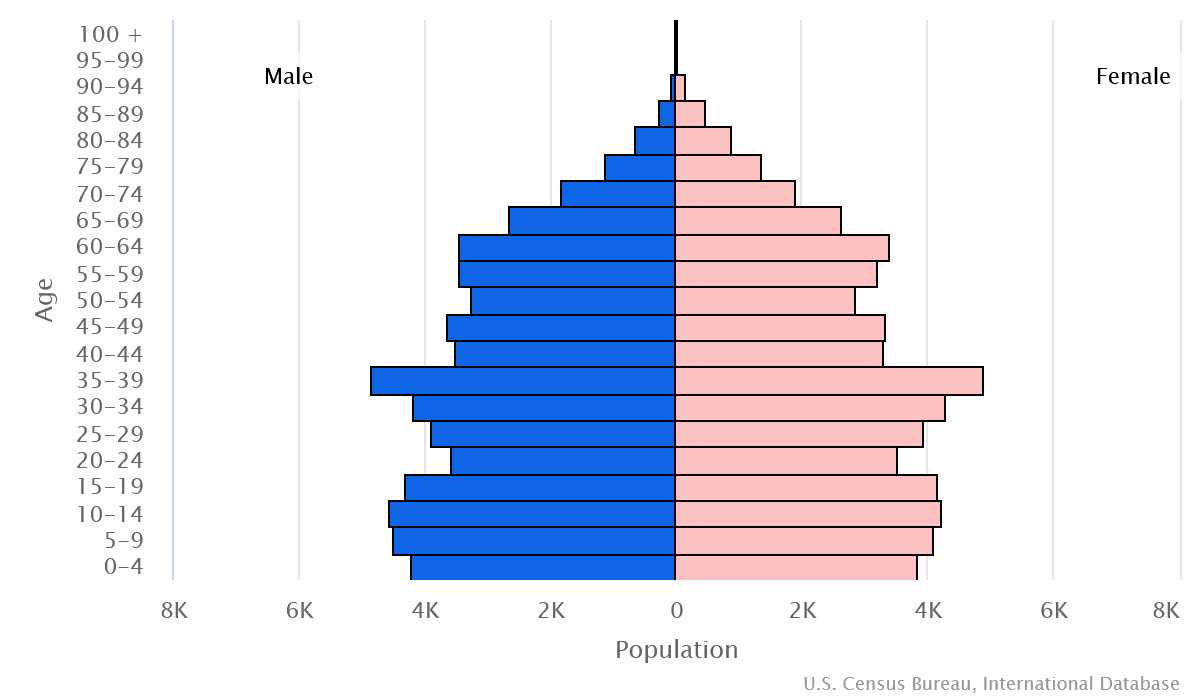Introduction
Background
The indigenous Carib people inhabited Grenada when Christopher COLUMBUS landed on the island in 1498, but it remained uncolonized for more than a century. The French settled Grenada in the 17th century, and Britain took the island in 1762, establishing sugar, cacao, and then nutmeg plantations. Independence in 1974 made Grenada one of the smallest independent countries in the Western Hemisphere.
Geography
Area
total : 344 sq km
land: 344 sq km
water: 0 sq km
Climate
tropical; tempered by northeast trade winds
Natural resources
timber, tropical fruit
People and Society
Population
total: 114,621
Ethnic groups
African descent 82.4%, mixed 13.3%, East Indian 2.2%, other 1.3%, unspecified 0.9% (2011 est.)
Languages
English (official), French patois
Religions
Protestant 49.2% (includes Pentecostal 17.2%, Seventh Day Adventist 13.2%, Anglican 8.5%, Baptist 3.2%, Church of God 2.4%, Evangelical 1.9%, Methodist 1.6%, other 1.2%), Roman Catholic 36%, Jehovah's Witness 1.2%, Rastafarian 1.2%, other 5.5%, none 5.7%, unspecified 1.3% (2011 est.)
Population growth rate
0.27% (2024 est.)
Government
Government type
parliamentary democracy under a constitutional monarchy; a Commonwealth realm
Capital
name: Saint George's
Executive branch
chief of state: King CHARLES III (since 8 September 2022); represented by Governor General Cecile LA GRENADE (since 7 May 2013)
head of government: Prime Minister Dickon MITCHELL (since 24 June 2022)
Legislative branch
description: bicameral Parliament consists of:
Senate (13 seats; members appointed by the governor general - 10 on the advice of the prime minister and 3 on the advice of the leader of the opposition party; members serve 5-year terms)
House of Representatives (15 seats; members directly elected in single-seat constituencies by simple majority vote to serve 5-year terms)
Economy
Economic overview
small OECS service-based economy; large tourism, construction, transportation, and education sectors; major spice exporter; shrinking but still high public debt; vulnerable to hurricanes; emerging blue economy incentives
Real GDP (purchasing power parity)
$2.008 billion (2023 est.)
$1.916 billion (2022 est.)
$1.785 billion (2021 est.)
Real GDP per capita
$15,900 (2023 est.)
$15,300 (2022 est.)
$14,300 (2021 est.)
Agricultural products
coconuts, sugarcane, eggs, bananas, vegetables, fruits, plantains, root vegetables, grapefruits, avocados (2022)
Industries
food and beverages, textiles, light assembly operations, tourism, construction, education, call-center operations
Exports
$899.153 million (2023 est.)
$712.263 million (2022 est.)
$537.898 million (2021 est.)
Exports - partners
US 33%, Antigua and Barbuda 10%, India 4%, Saint Vincent and the Grenadines 4%, France 3% (2022)
Exports - commodities
nutmeg/cardamom, frozen fruits and nuts, fish, other fruits, toilet paper (2022)
Imports
$1.021 billion (2023 est.)
$791.232 million (2022 est.)
$621.896 million (2021 est.)
Imports - partners
US 37%, Trinidad and Tobago 11%, Cayman Islands 11%, China 5%, UK 3% (2022)
Imports - commodities
refined petroleum, poultry, plastic products, wheat, cars (2022)
Exchange rates
East Caribbean dollars (XCD) per US dollar -
Page last updated: Wednesday, July 24, 2024




